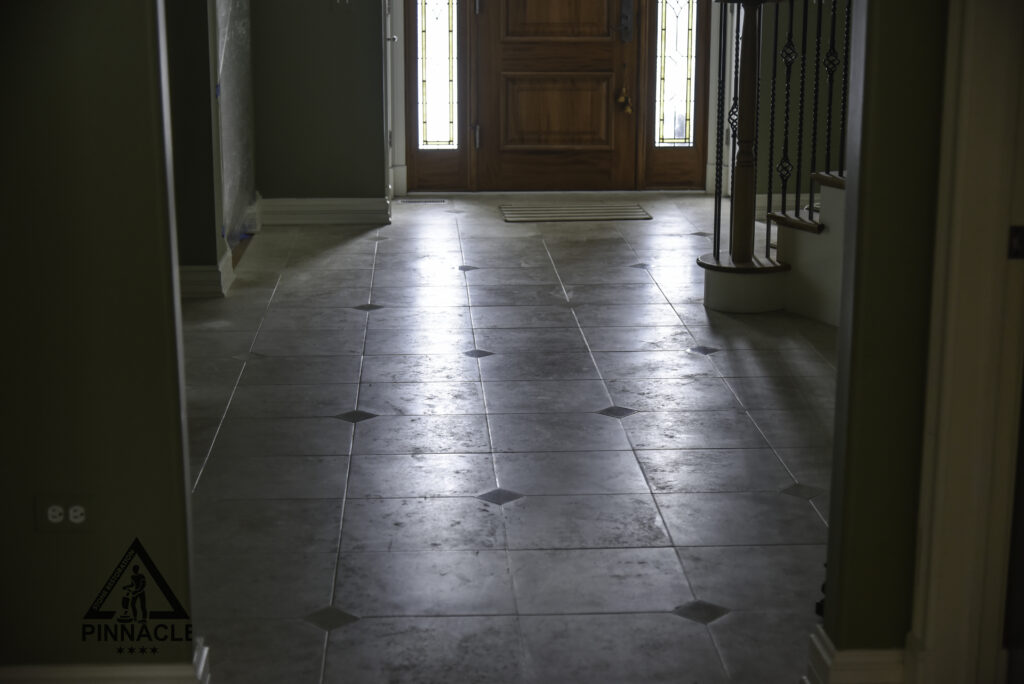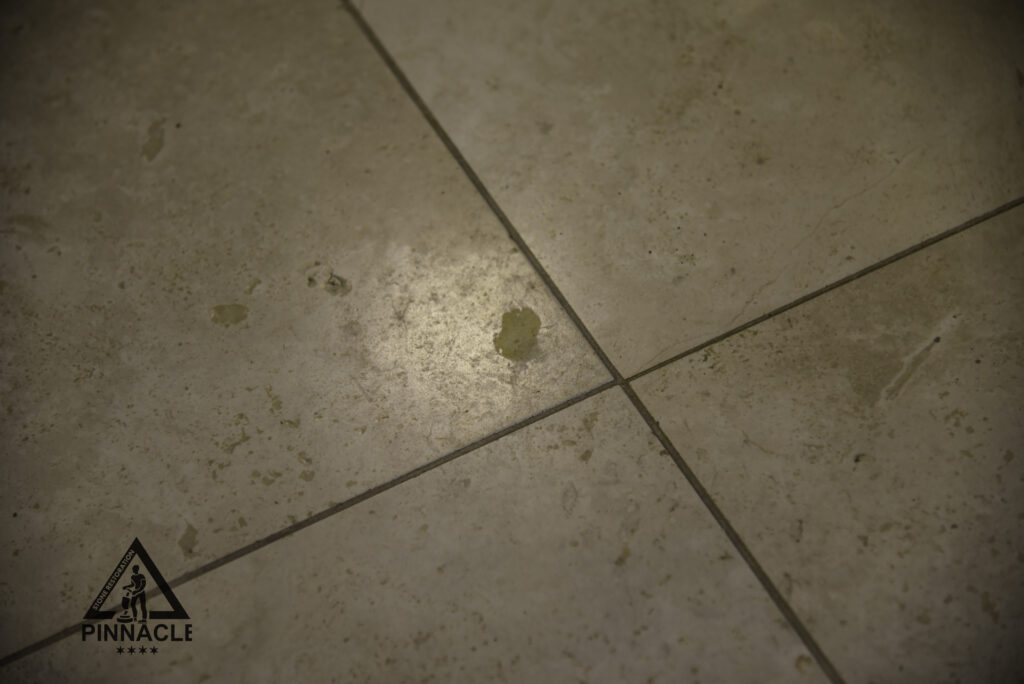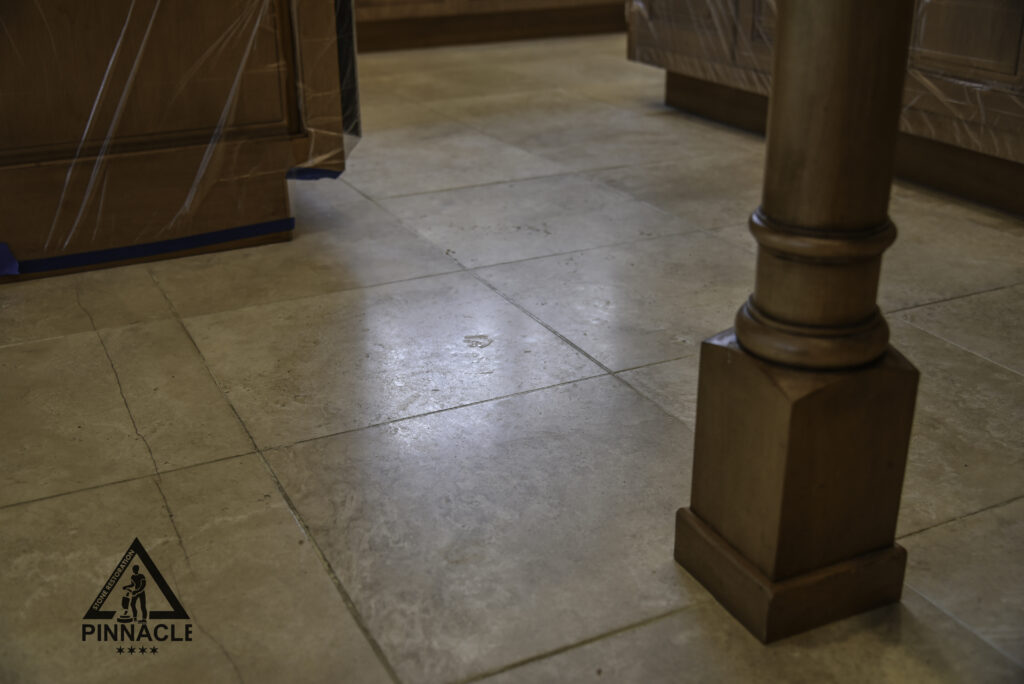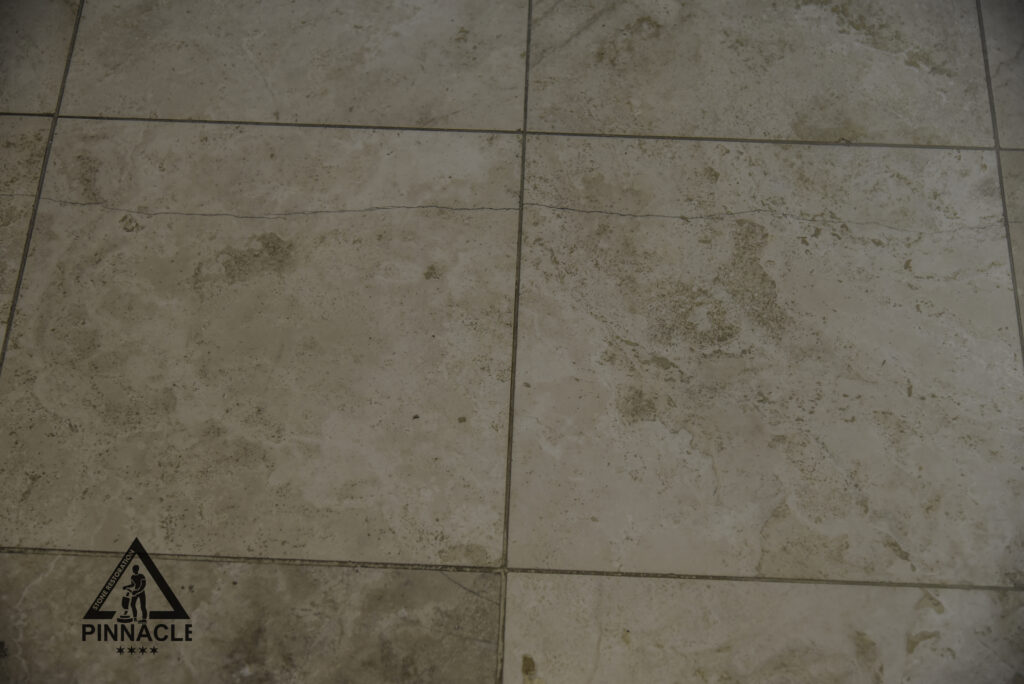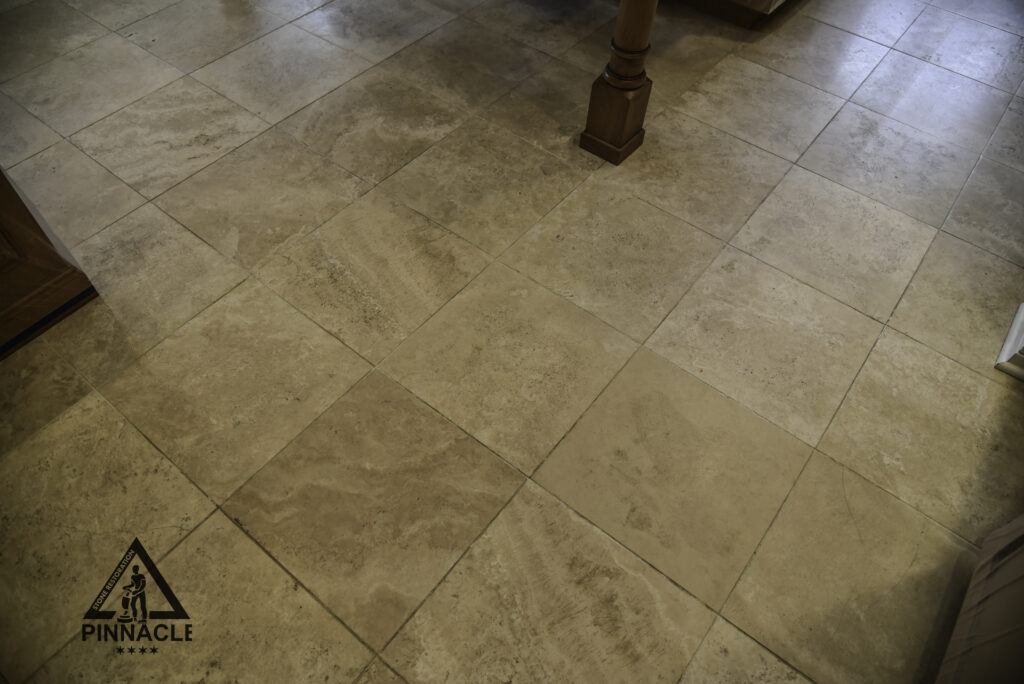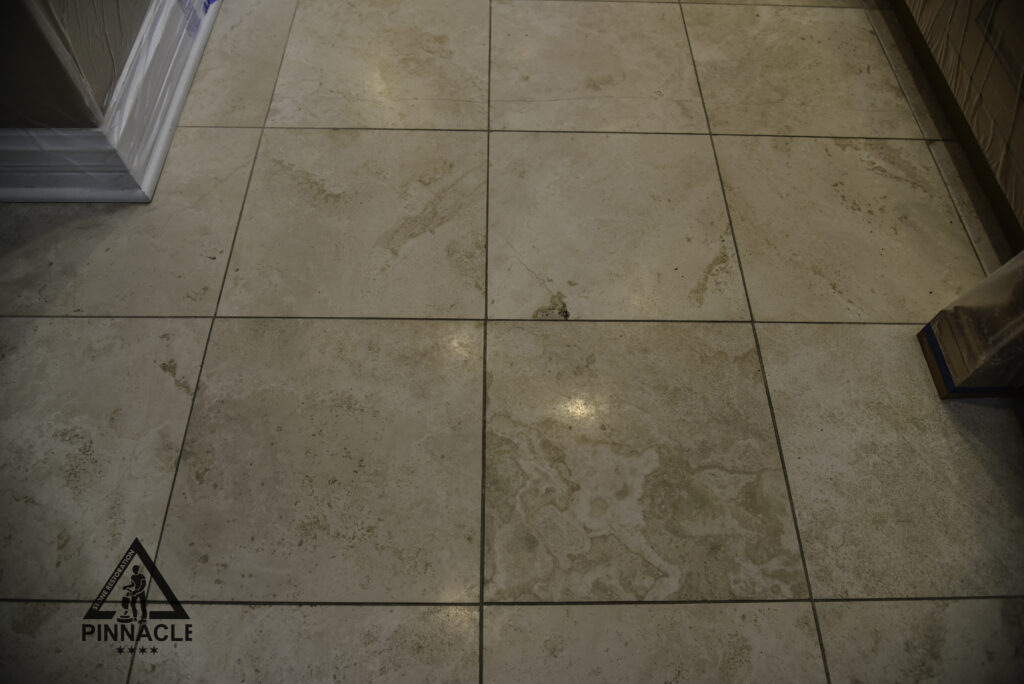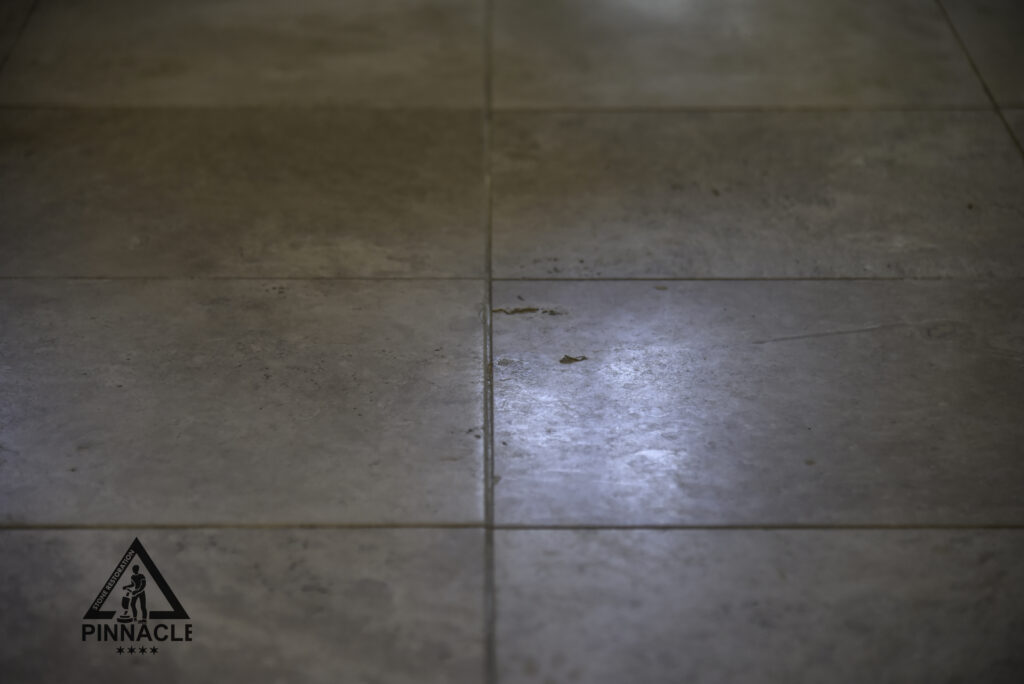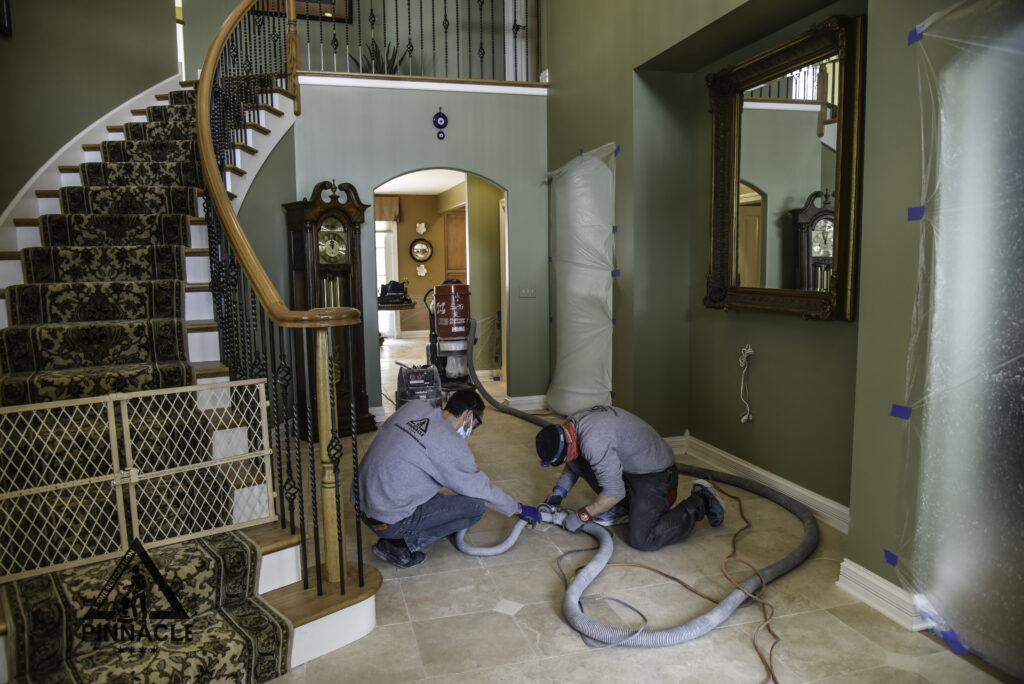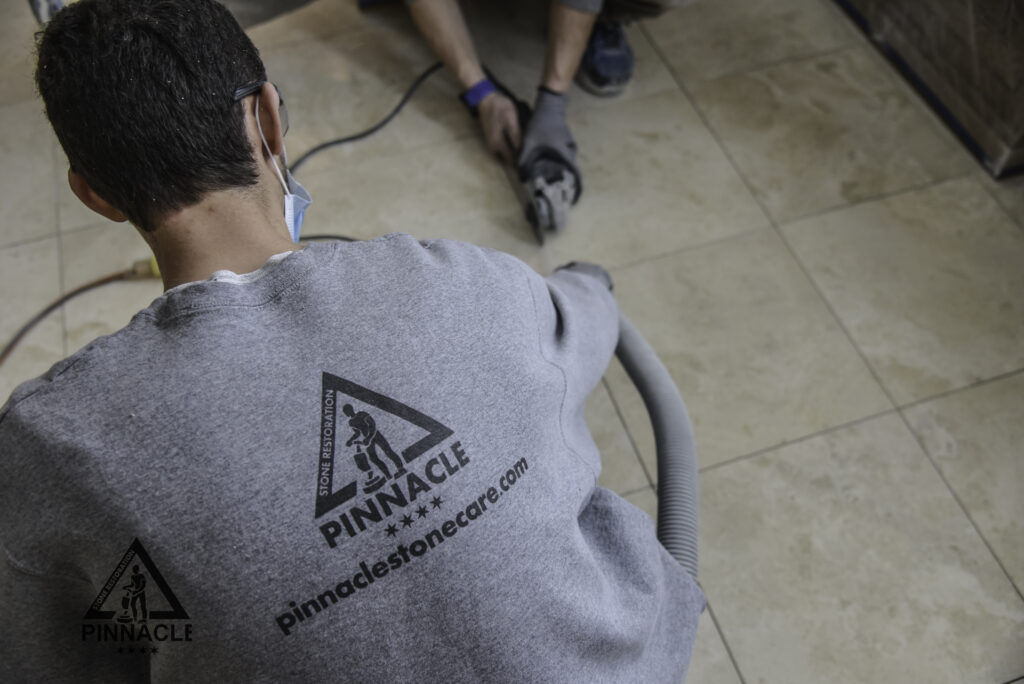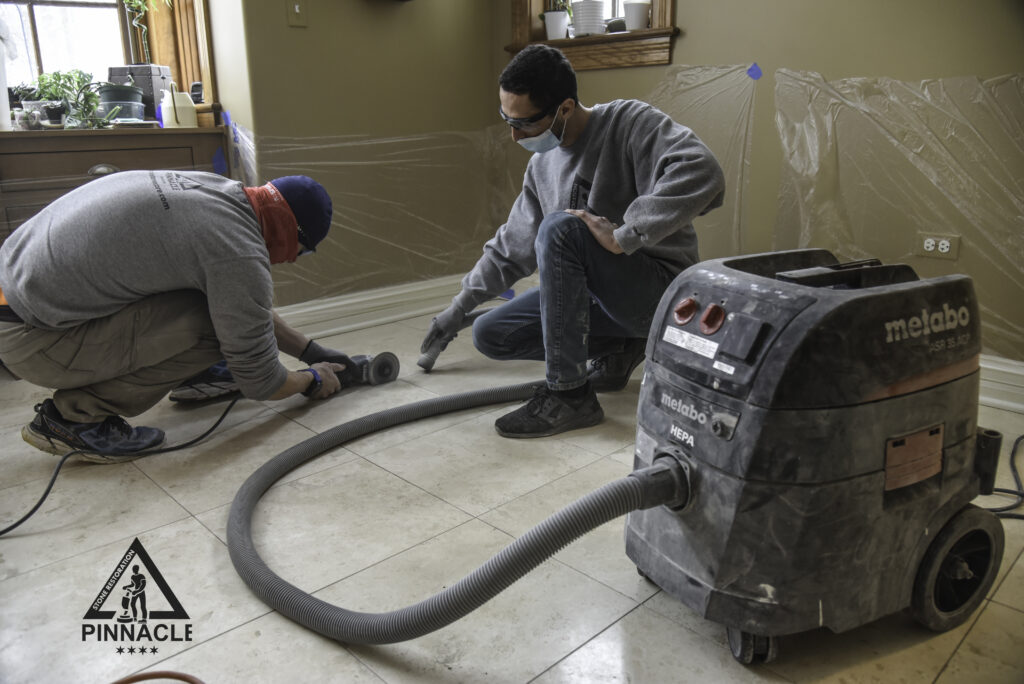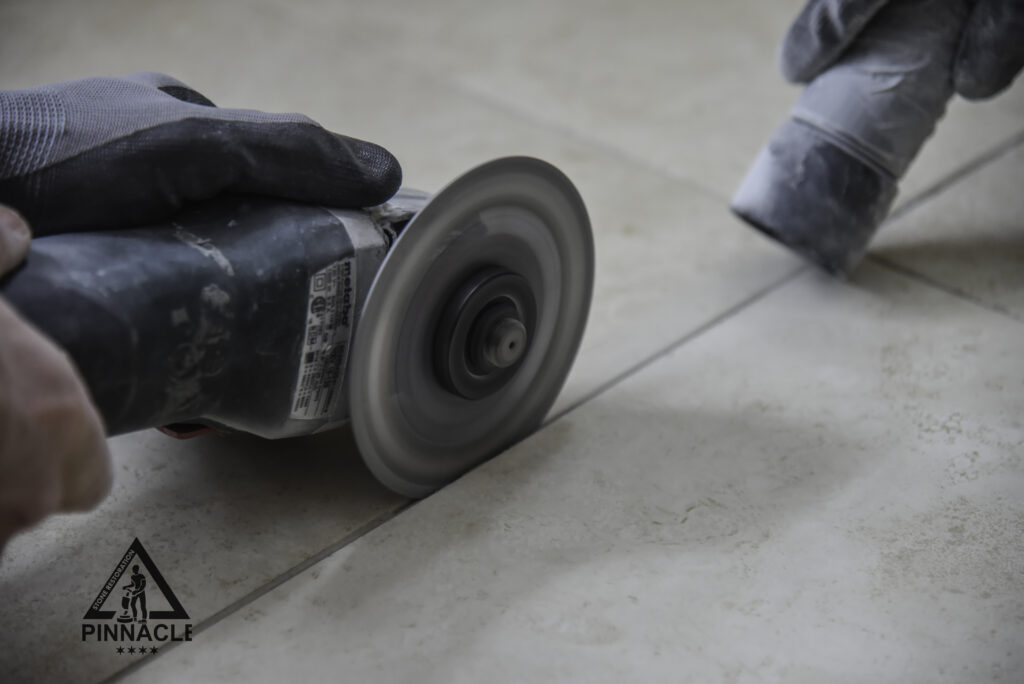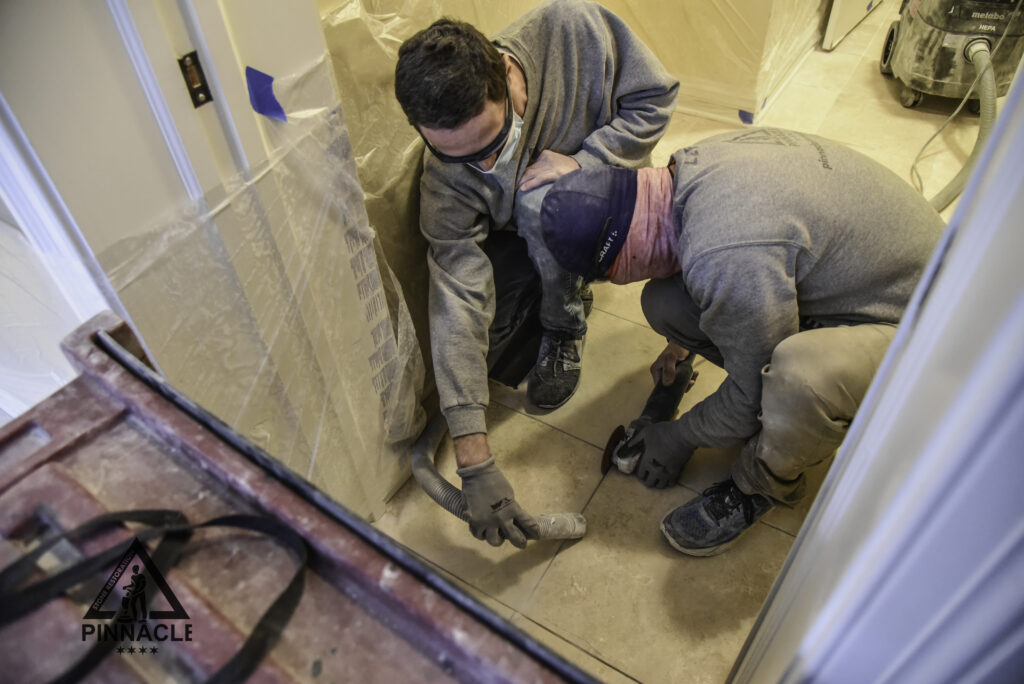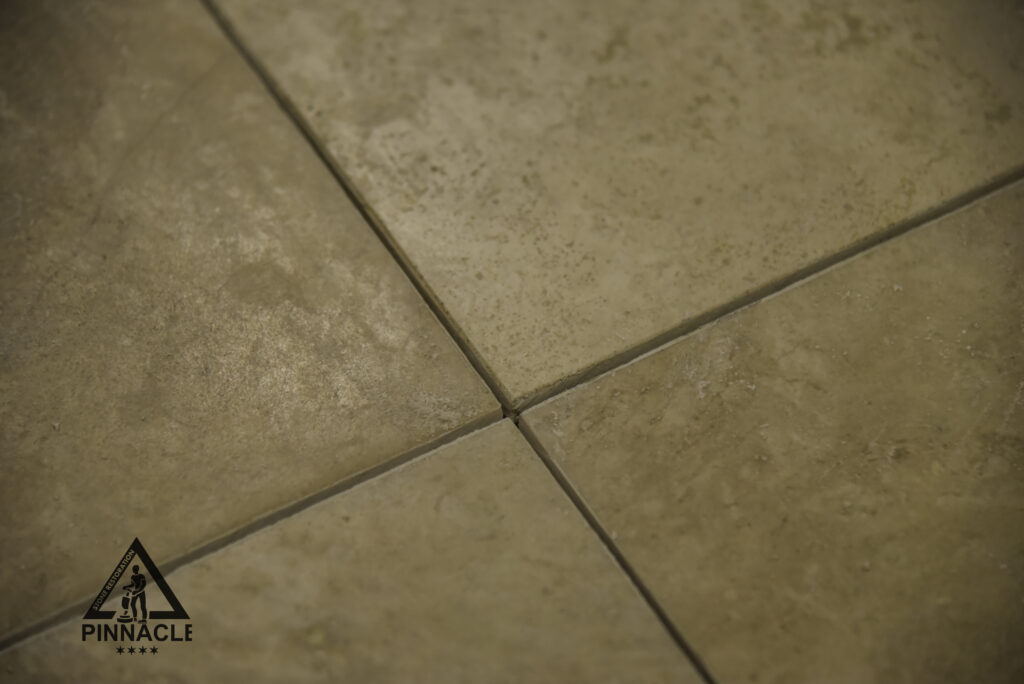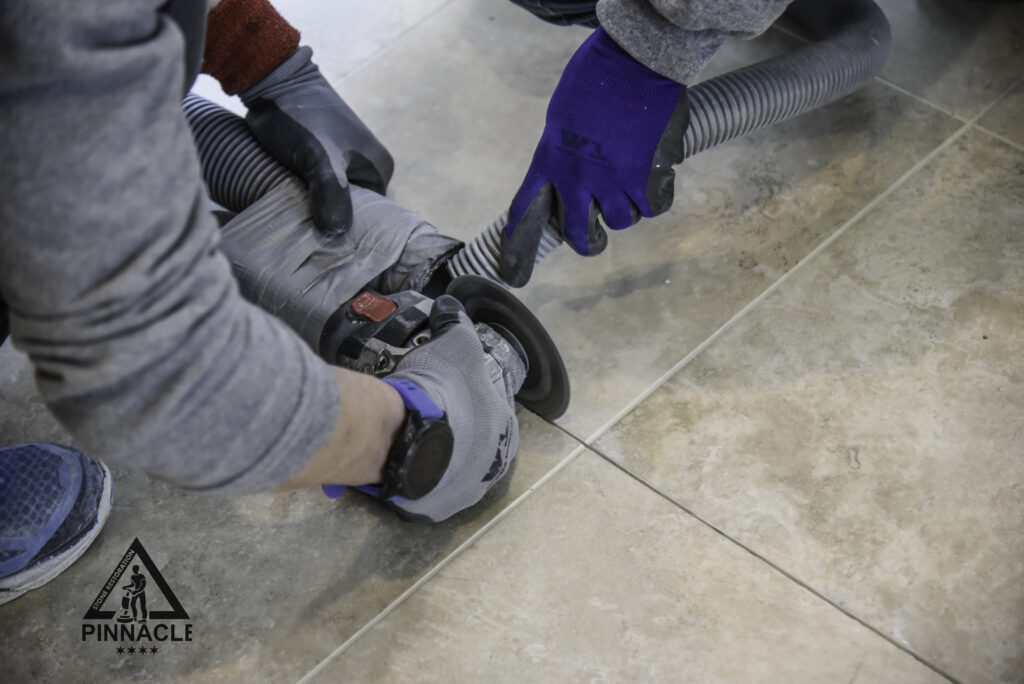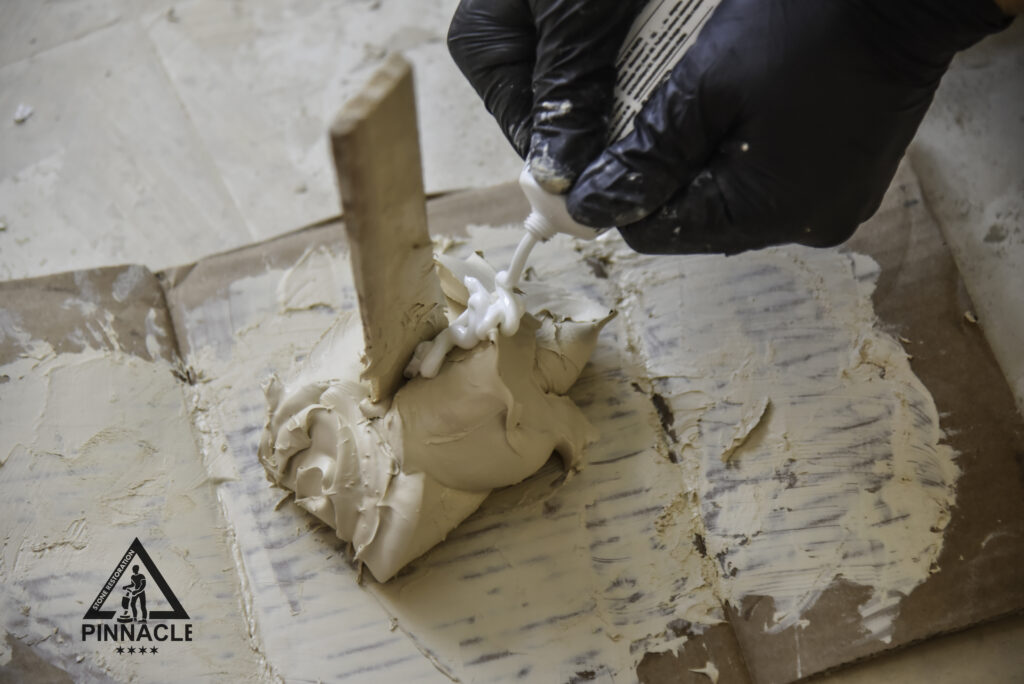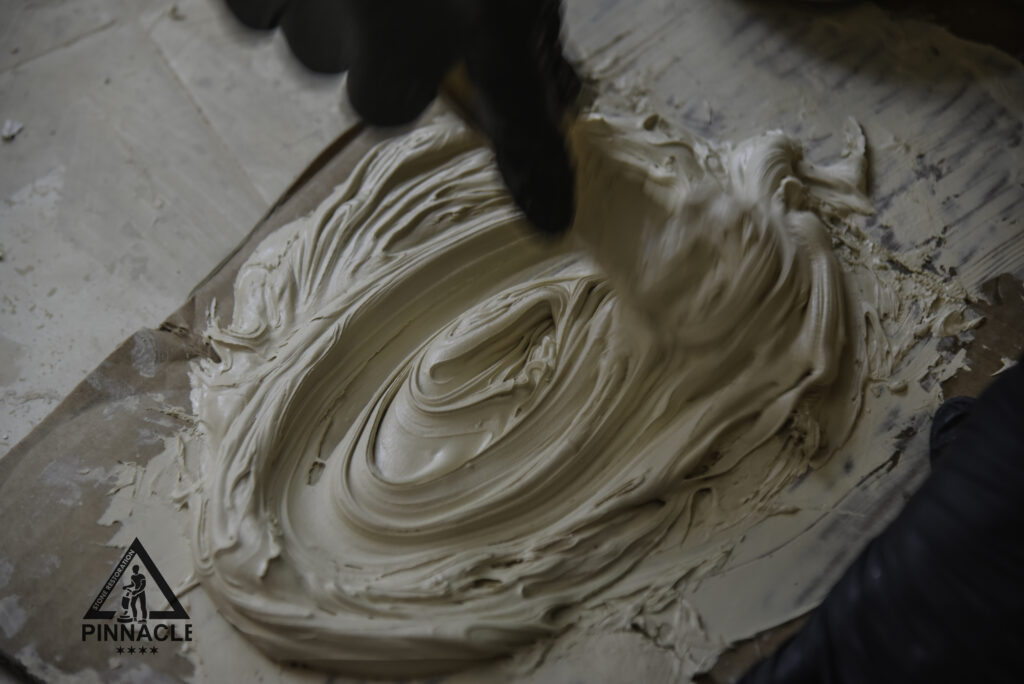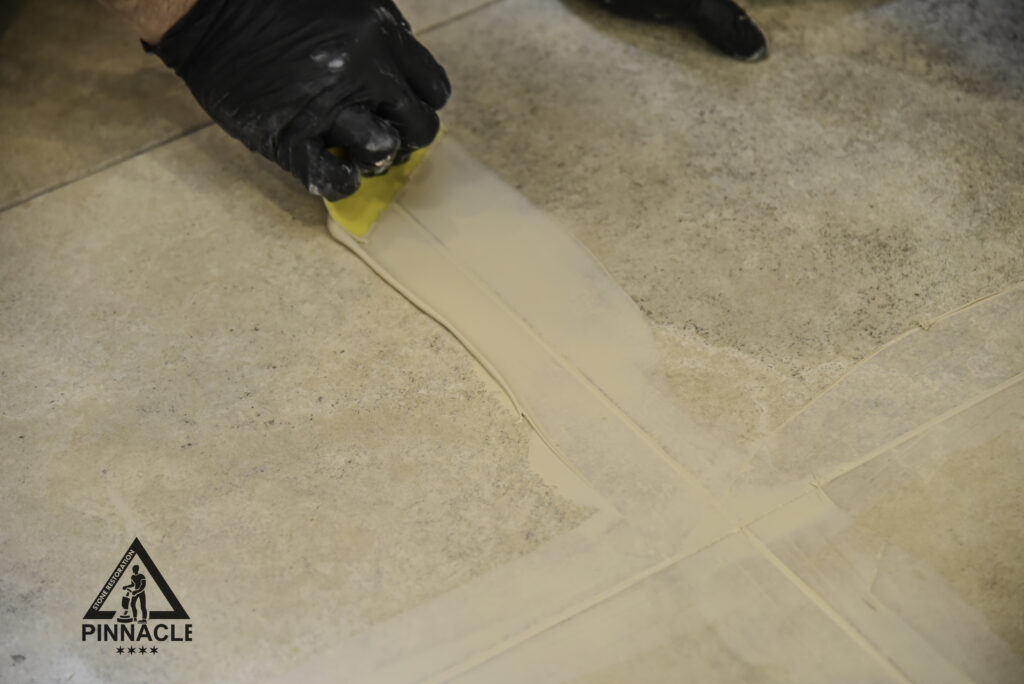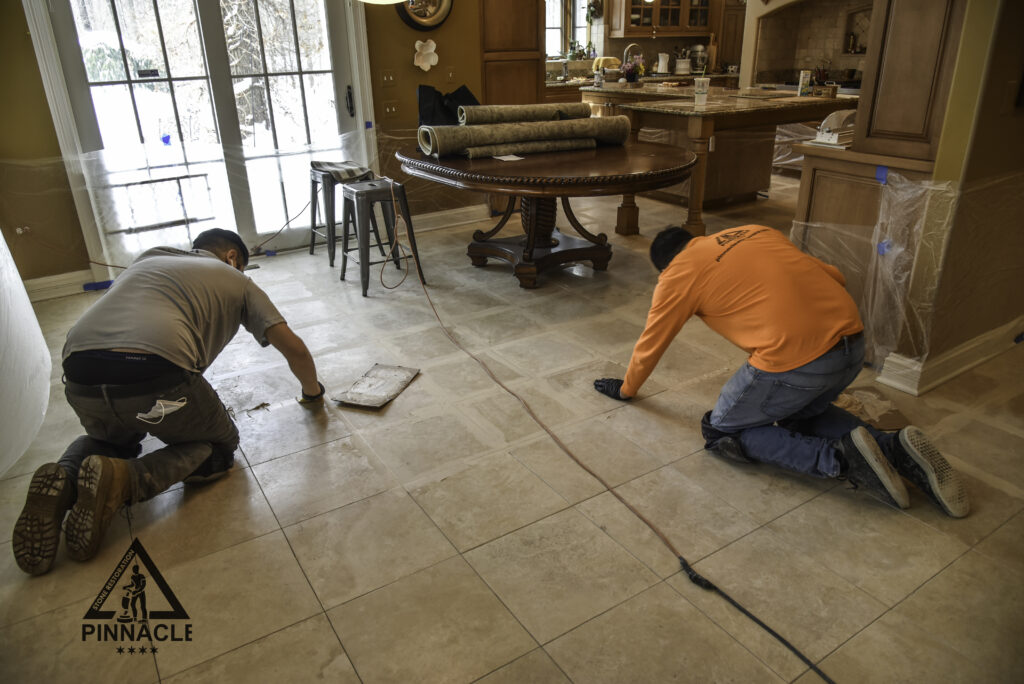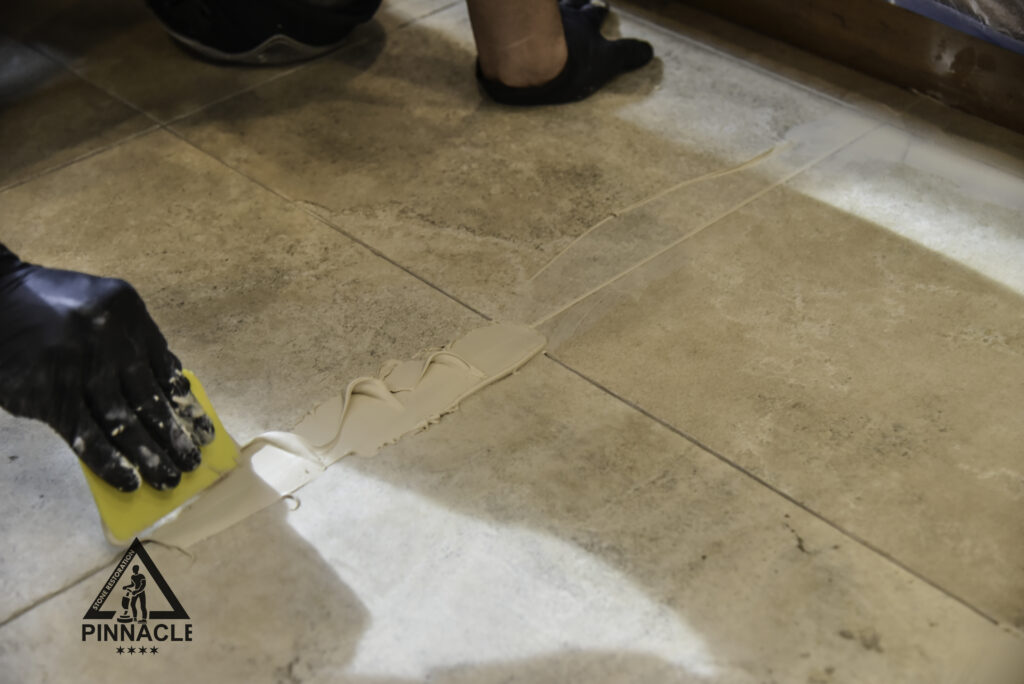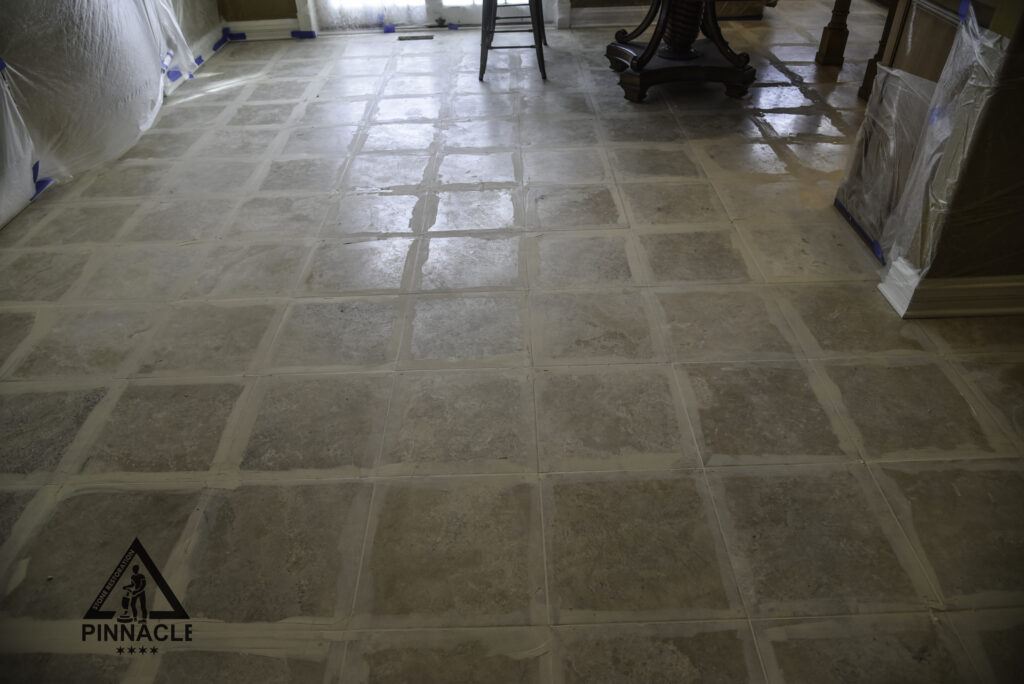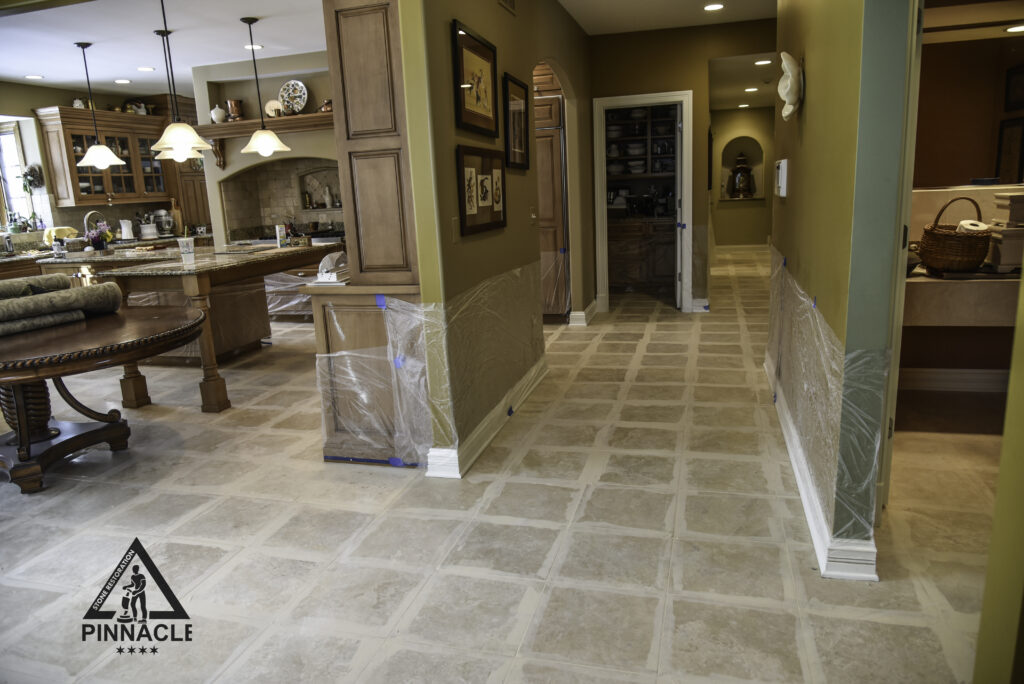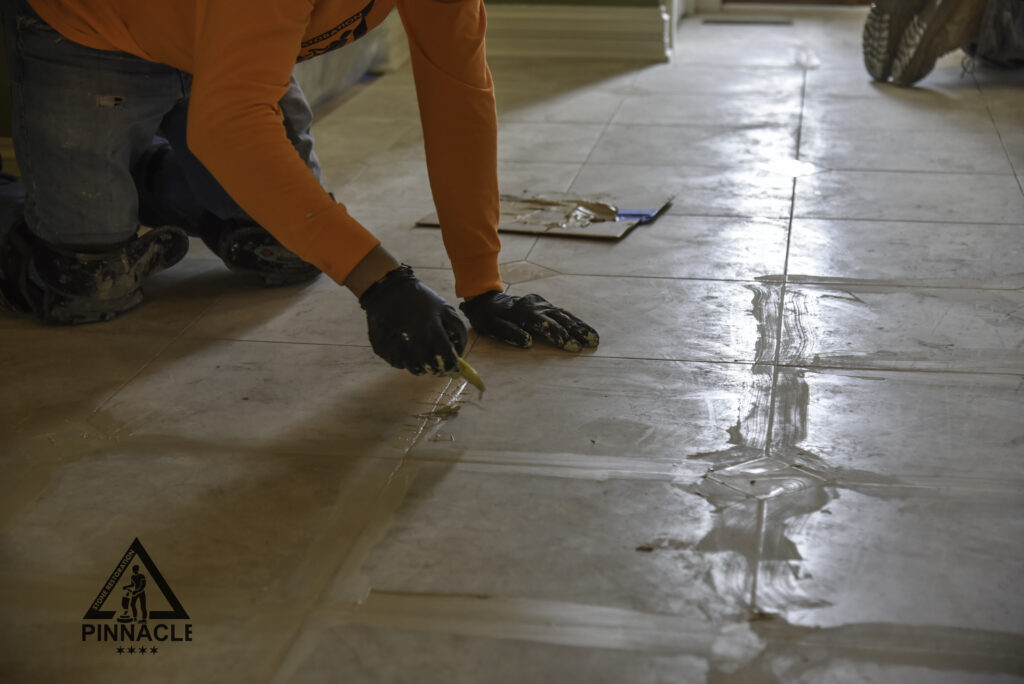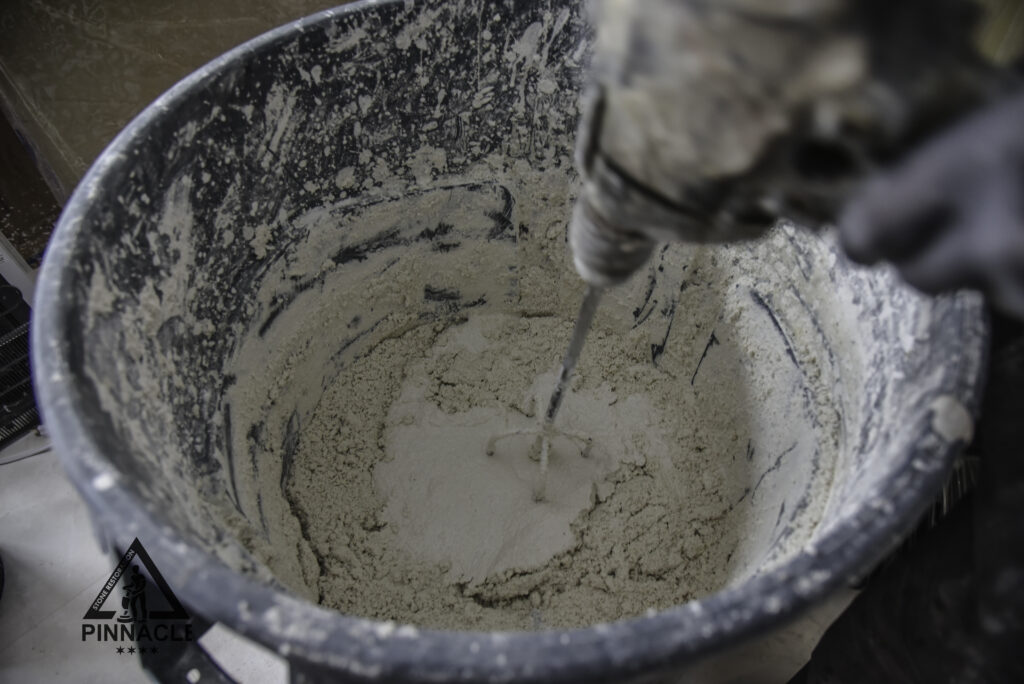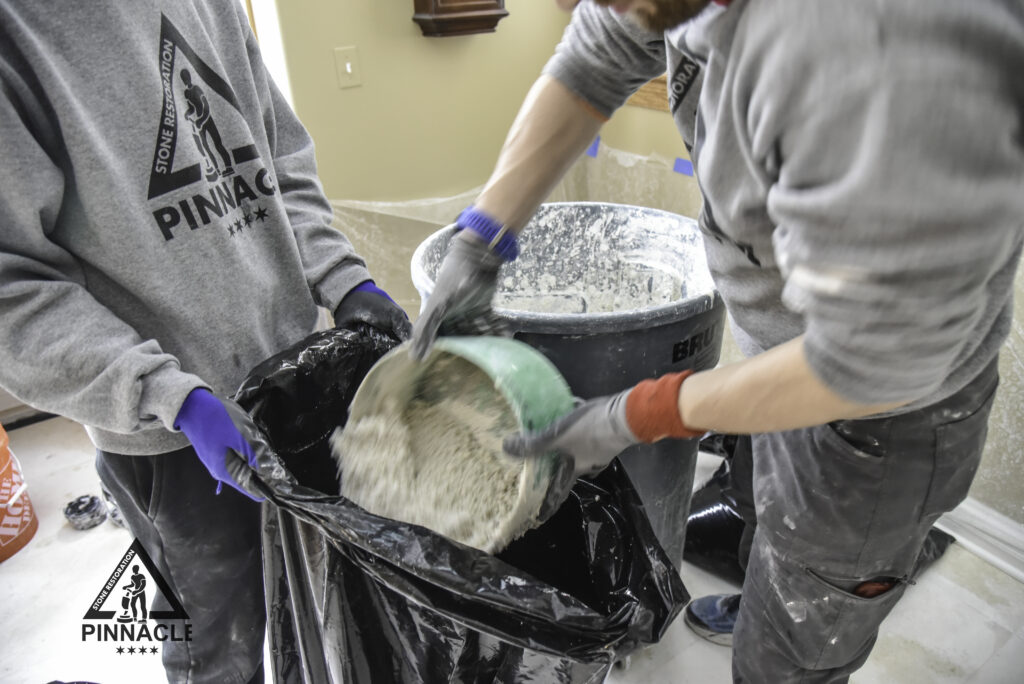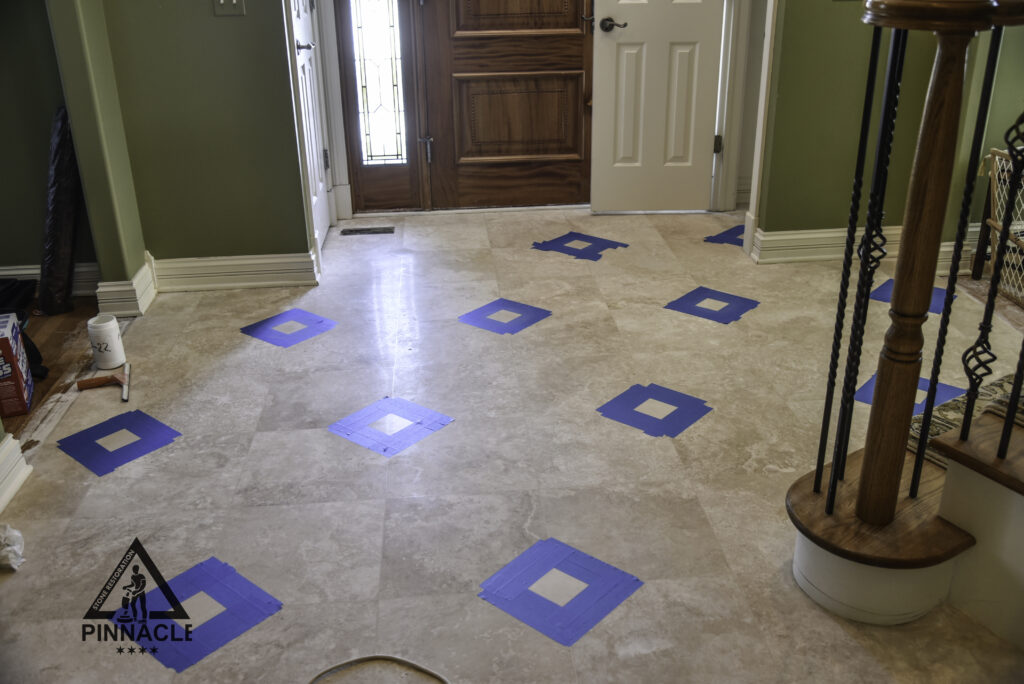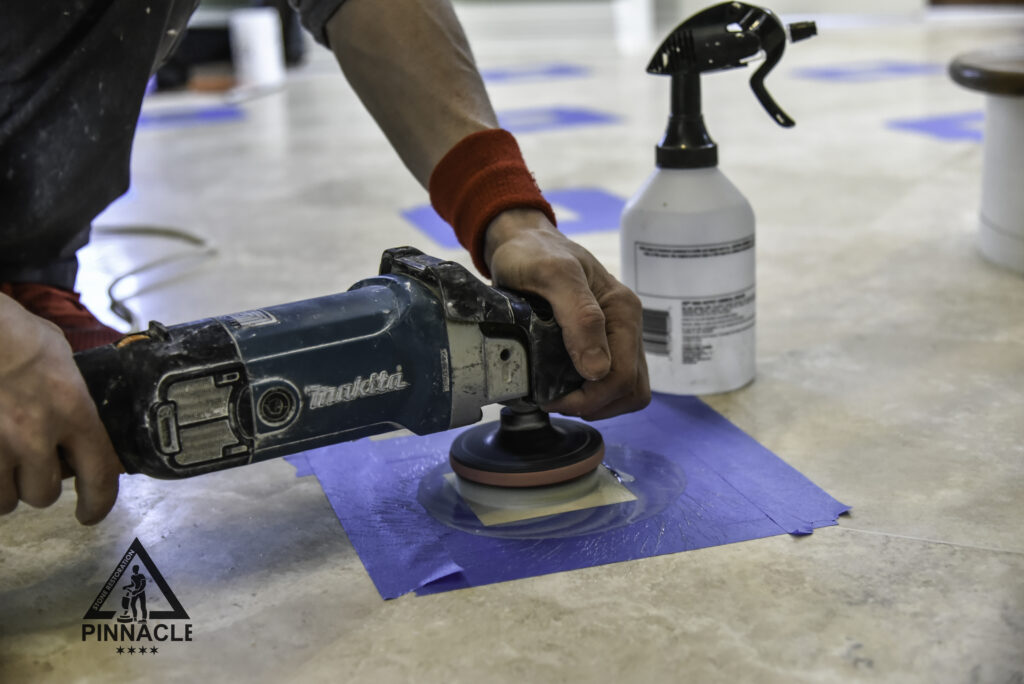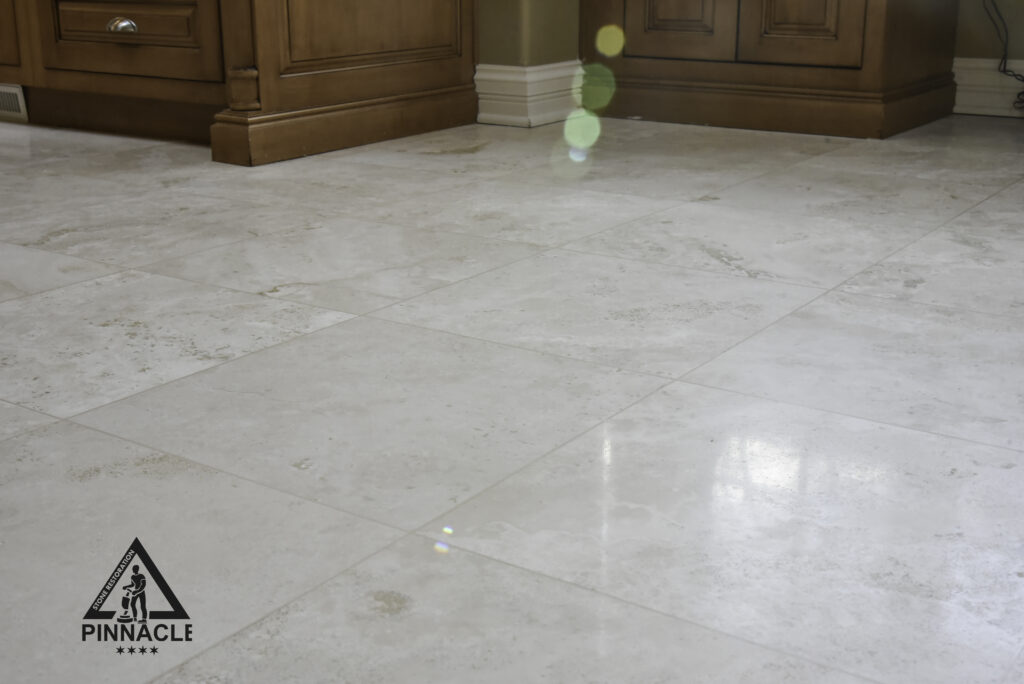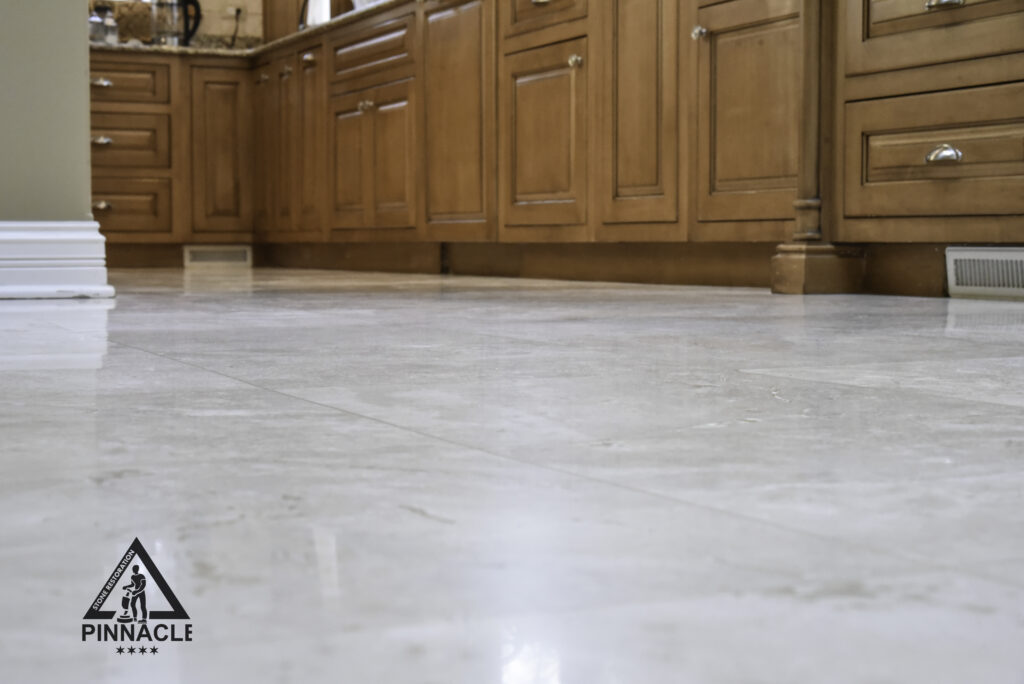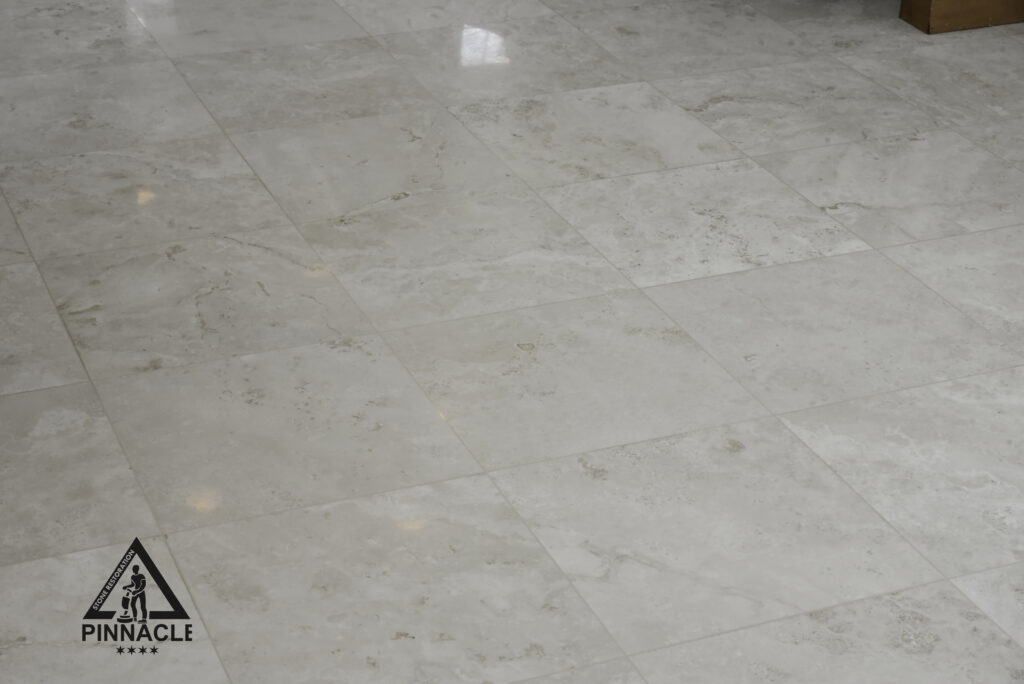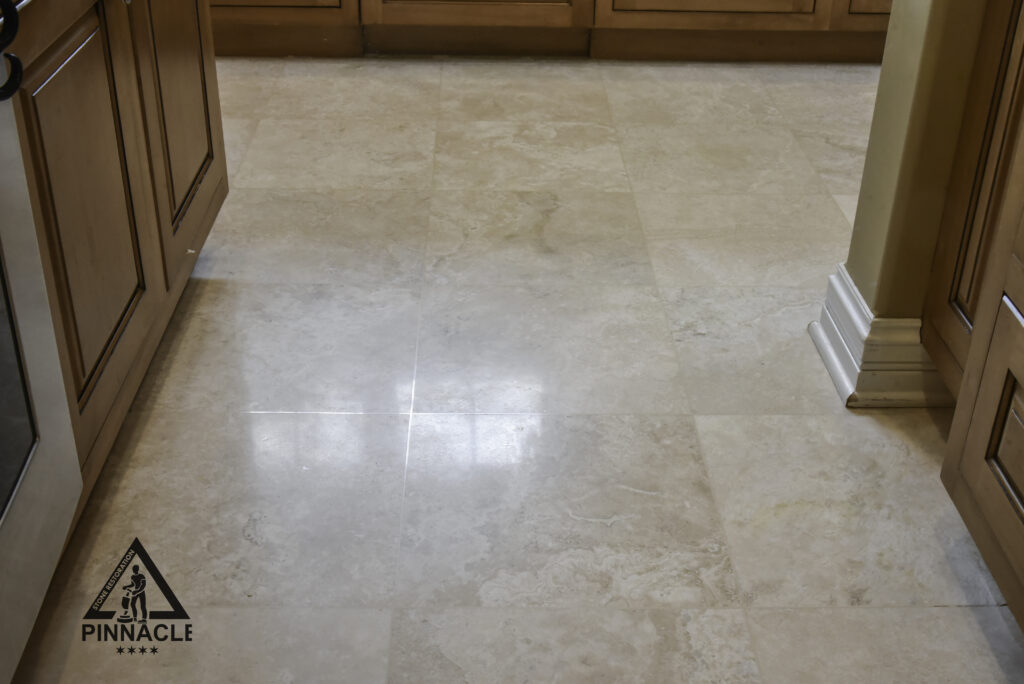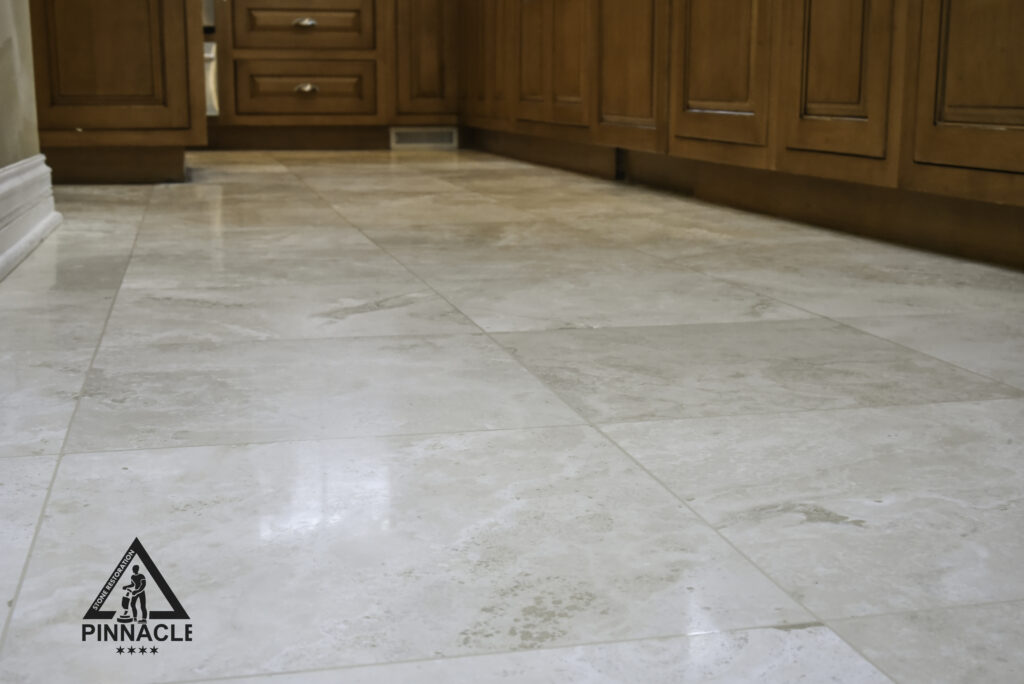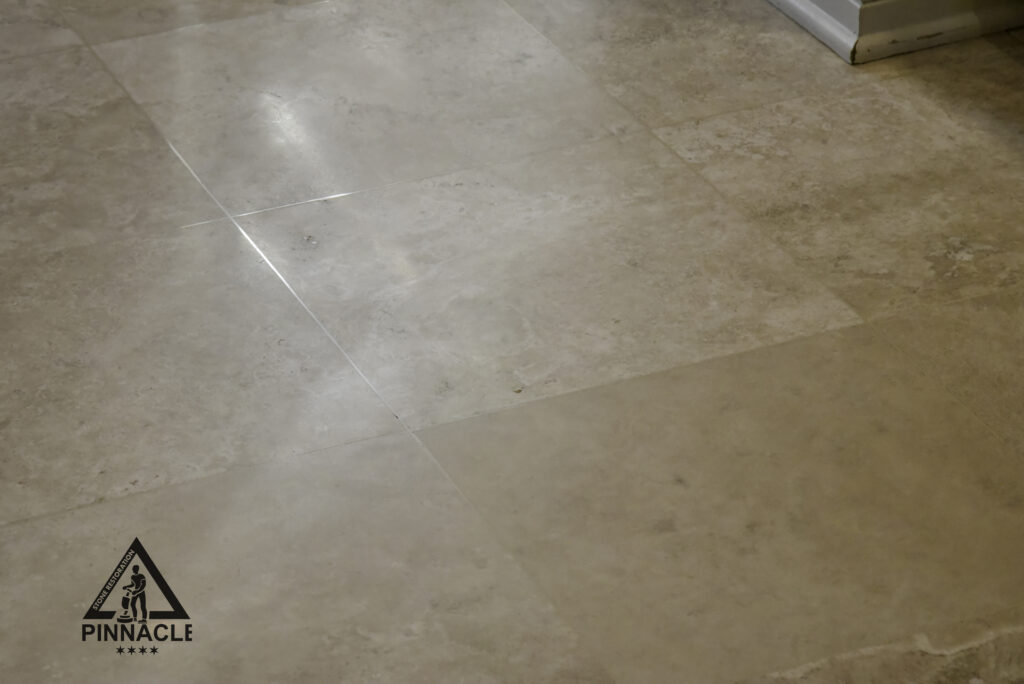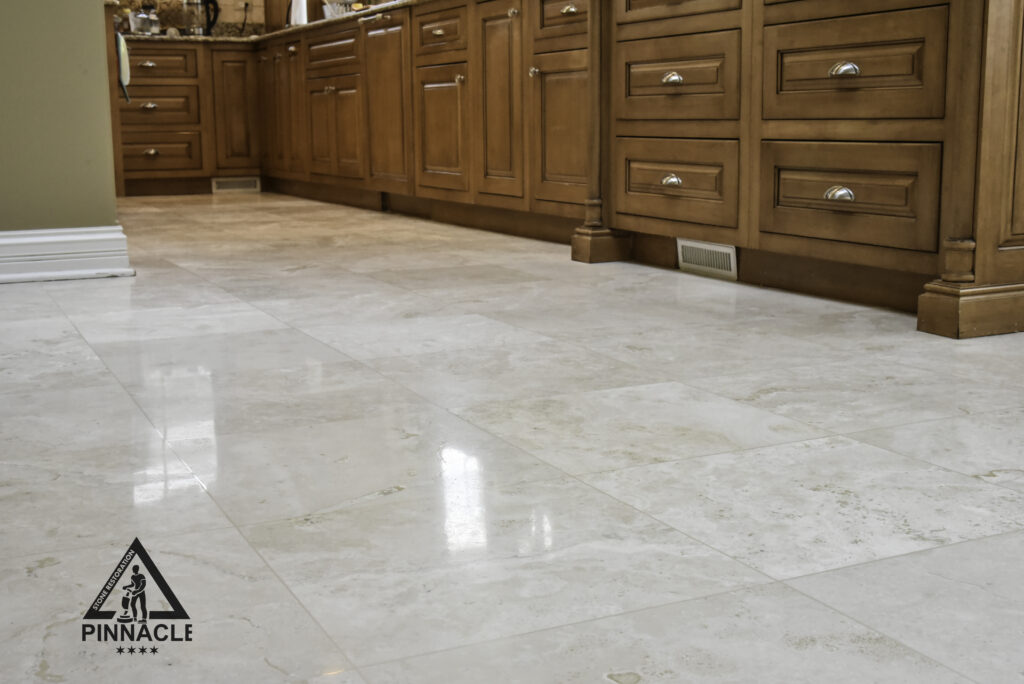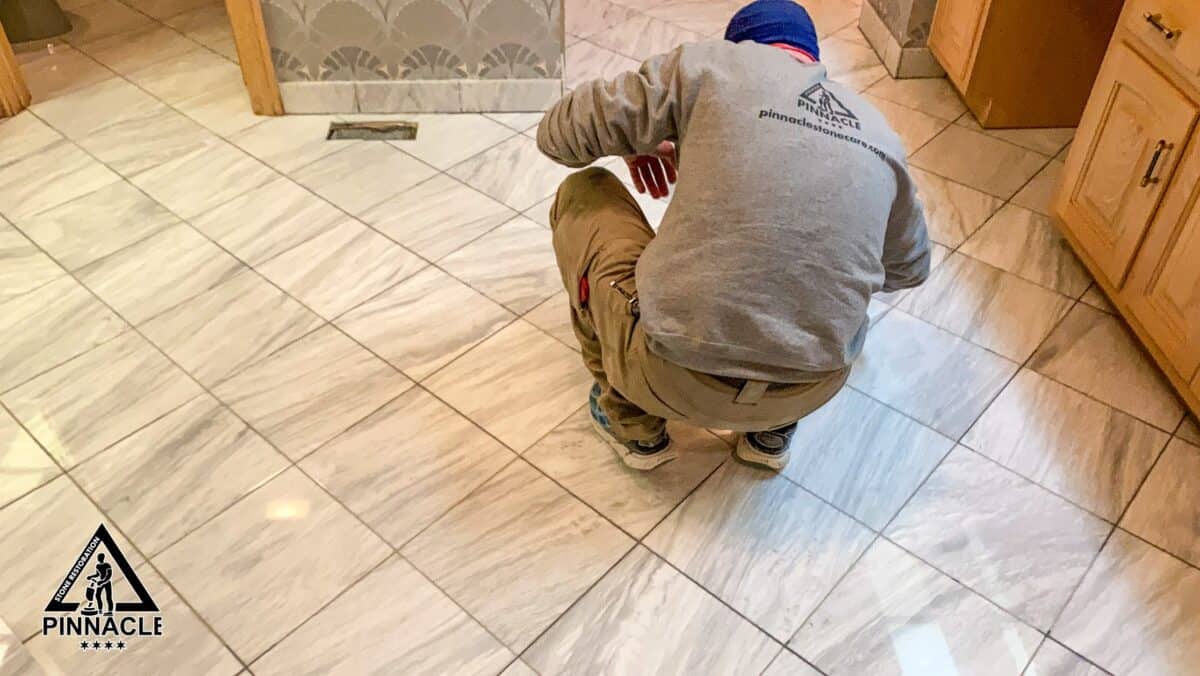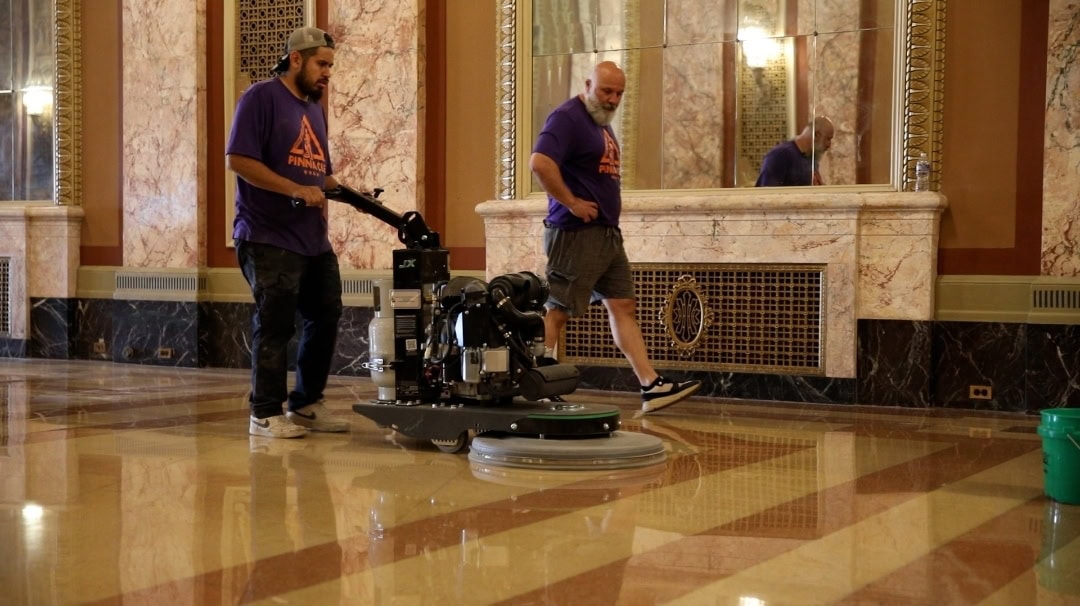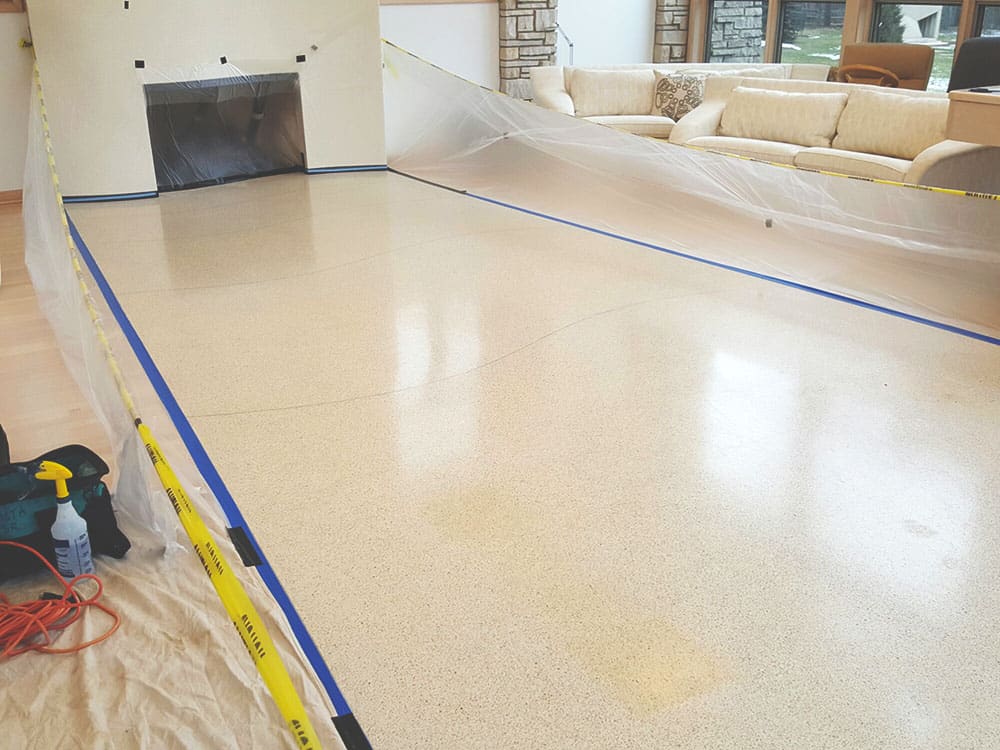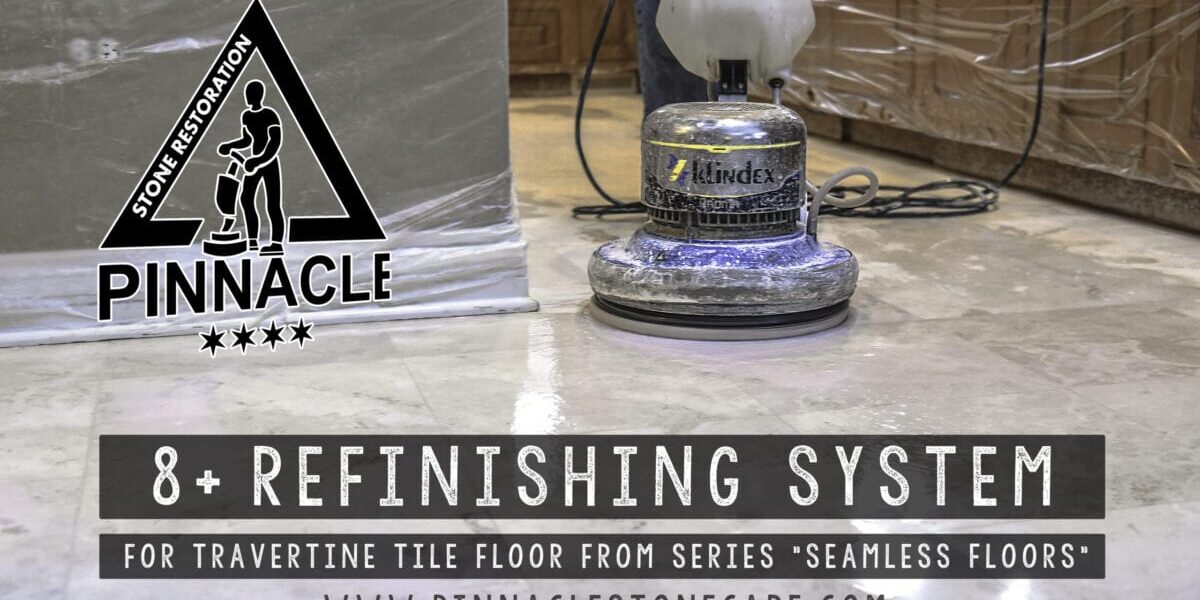
8+Refinishing System for travertine tile floor from series “Seamless Floors” (Grout removal, lippage removal/seam leveling, grinding, honing, sealing)
BEFORE
These travertine floors have multiple issues such as severe tile lippage, dullness, scratches, extensive wear and tear, stains, cracks and holes, and damaged dirty cement-based grout.
OLD GROUT REMOVAL (AS DUSTLESS AS POSSIBLE)
The first step of our 8+ refinishing systems AKA seamless floor system project is GROUT REMOVAL.
Our highly experienced technicians use proper tools to ensure this step is accurately executed and that we make it as dustless process as possible.
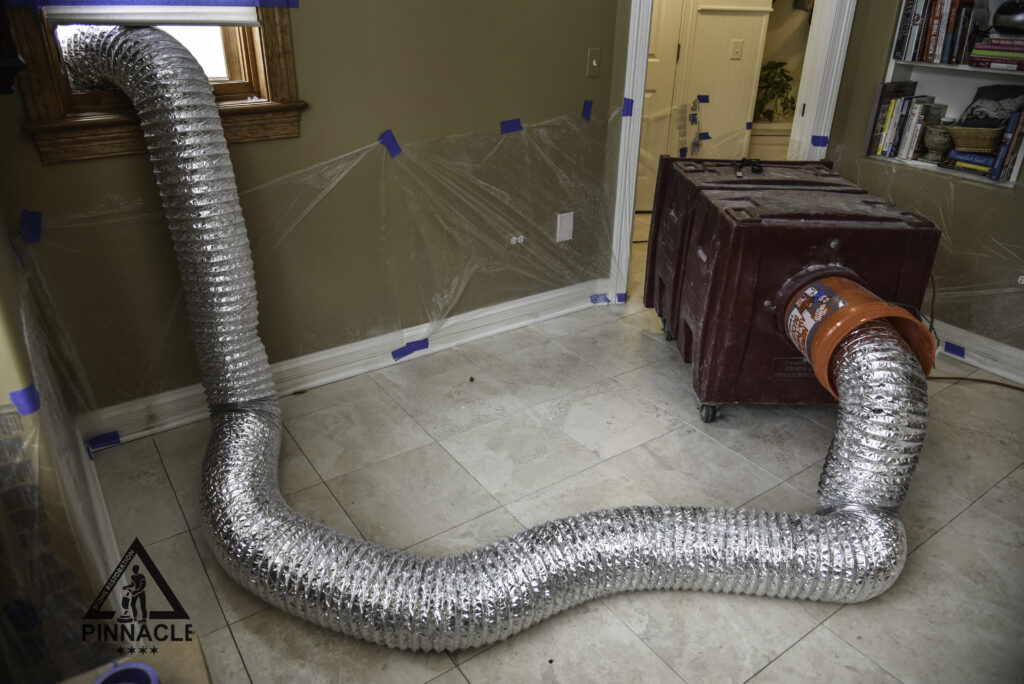
To ensure maximally dustless operation we use a special dust collector unit placed in the working area. We also use several sets of vacuum systems to collect dust produced by grout removal process.
EPOXY FILLING INTO EMPTY TILE JOINTS
Next step is EPOXY FILLING. First, we prepare the epoxy filler. We color match epoxy with the travertine floor to be filled into the already emptied tile joints. Then we mix it with hardener to be applied right away.
We can only mix a limited amount of filler at a time because of its hardening feature. Each technician makes frequent small batches of epoxy filler because the project has a very substantial square footage.
LIPPAGE REMOVAL – FLOOR GRINDING PROCESS
Next comes LIPPAGE REMOVAL, which is an important step for achieving seamless floor result. Lipping was caused when two or more travertine tiles in this floor were joined together and slightly misaligned or twisted which caused one or more edge of multiple tiles to be higher or lower than the adjoining tiles.
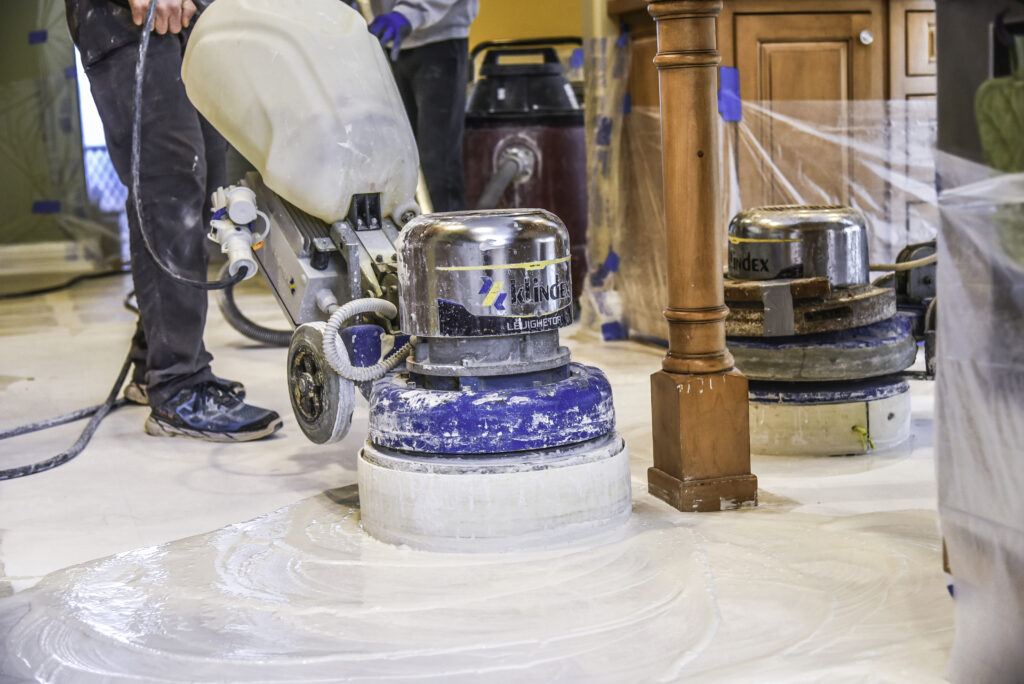
It is a heavy-duty process which requires proper equipment, strong and experienced stone experts, and precise calculations.
We begin the floor grinding process. After first test we notice the machine does not cut the desired amount of stone. We attach special weights on top of the machine to increase tool pressure points to make sure we cut the necessary amount of stone in order to level the travertine tiles.
The wet grinding of the stone surface is the best way to ensure the dustless process of natural stone.
Our grinding machines have a special apron installed around grinding head to prevent slurry from splashing all over.
The second machine with the next level grinding pads is following the footsteps of the first grinding machine that has the deepest cut metal pads. This is to ensure the timeliness of the project and meet our deadlines.
Notice how much slurry is produced. This indicates how deep we are grinding the stone in order to level the tiles.
We quickly pick up the formed slurry by wet vacuum systems. When enough is picked up we mix the large amount of stone slurry with the quick gel to ensure proper environmentally friendly waste system.
All the travertine tile lippage has been removed in order to achieve solid seamless floor.
GROUTING PROCESS
In this next step of our 8+ refinishing AKA seamless floor system project is GROUTING.
After coerce grinding process the travertine is left with multiple exposed holes. Those holes are a part of stone’s natural structure. We apply color matched grout all over the travertine floors to ensure the maximally possible number of holes to be filled with travel.
Our technicians use different trowels well designed to press grout into those exposed holes.
We give the grout a day and a half to get fully cured. Then we come back to grind the floor to remove grout excess.
HONING PROCESS
We start the HONING process. We work on edges by hand to ensure we reach all the narrow spaces that floor machines could not cover. As the last part of honing process, we use DIP (diamond impregnated pads) system for fine honing process.
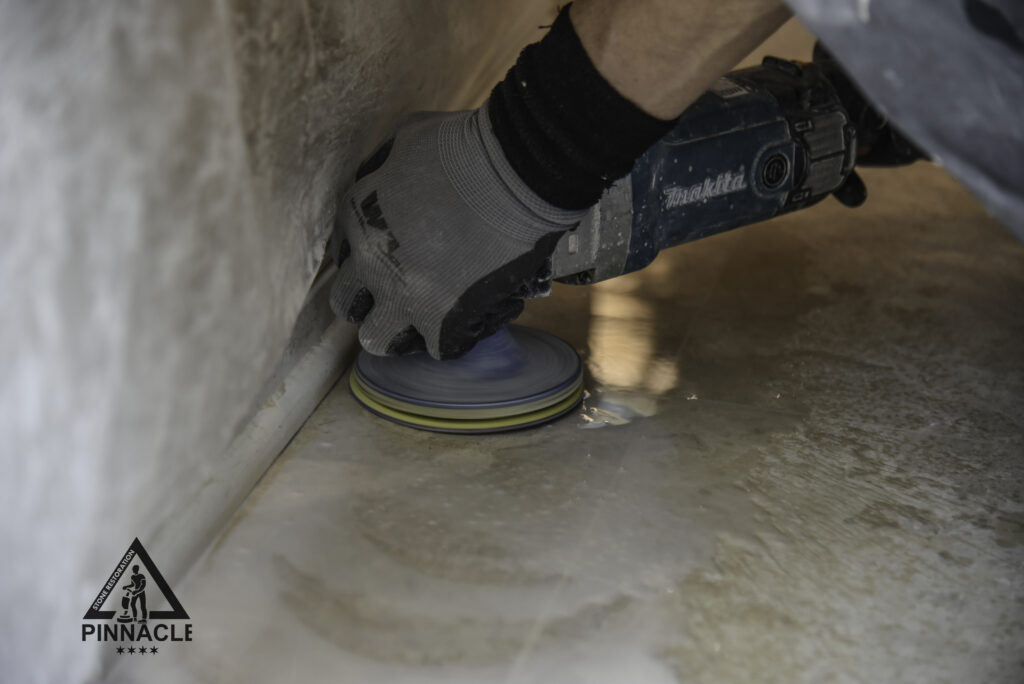
D.I.P. System (Diamond Impregnated Pads)
We use diamond impregnated pads for fine honing as one of the last steps. The pads we use are made with billions of microscopic diamonds. They help us bring travertine floor to a desired slightly sheen matte finish.
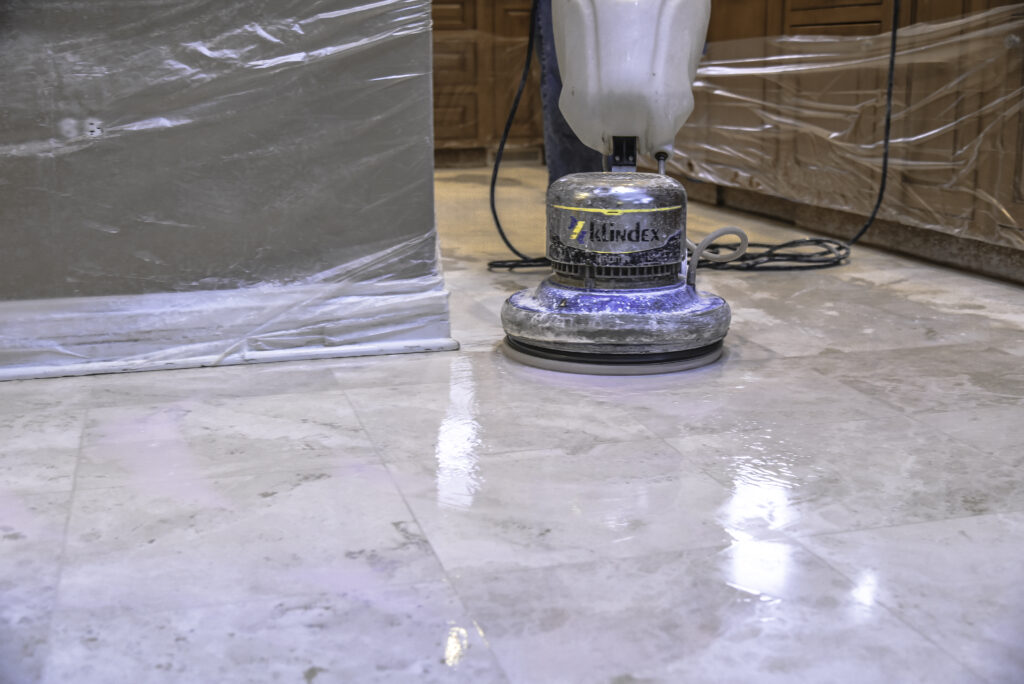
MARBLE INSERTS POLISHING
This particular project has an extra step for us. The foyer travertine floor has marble inserts which our client asked to make shiny to stand out.
Since the travertine tiles are honed, we need to carefully polish those marble inserts without disturbing already honed travertine. We mask travertine tiles around marble inserts with the masking tape. We polish the inserts by hand and then remove the masking tape.
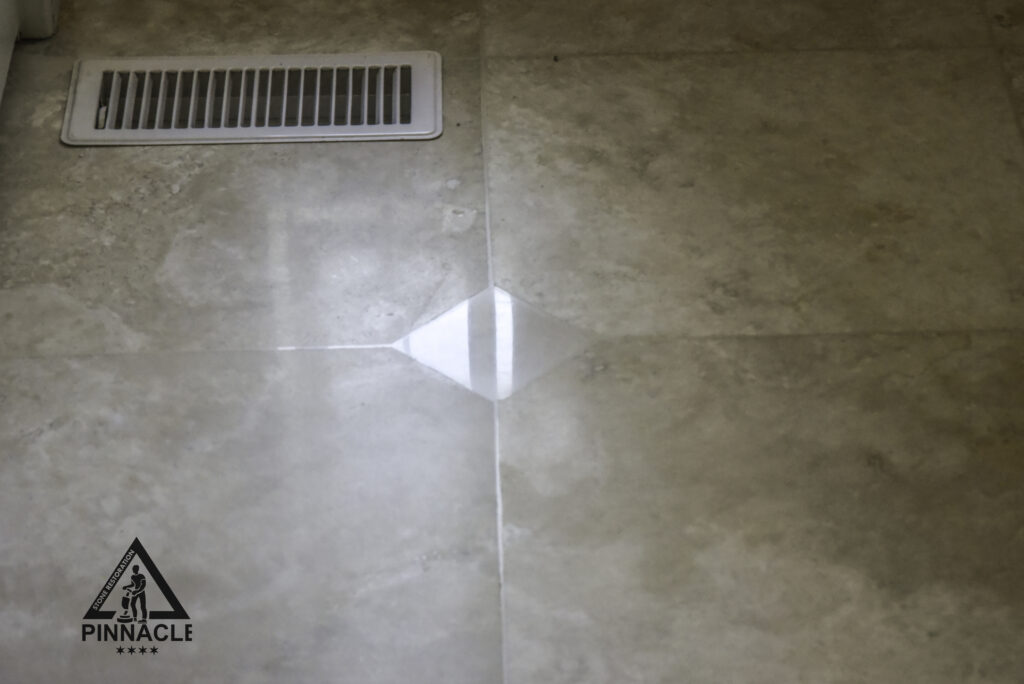
The shiny marble inserts really stand out among honed travertine tiles and give the foyer a special charm.
FLOOR SEALING PROCESS
The last step of our 8+ refinishing systems AKA seamless travertine floor project is SEALING. We do not use a traditional way of sealing with the microfiber pads.
We apply sealer to travertine floors using floor machines. It is a more European style of stone sealing and it has been proven to be highly effective.
The maintenance of this renewed seamless travertine tile floor will be a bliss from now on.
AFTER
CREDITS:
Photography, Video Production and Editing: by ViktoriyaDesigns
